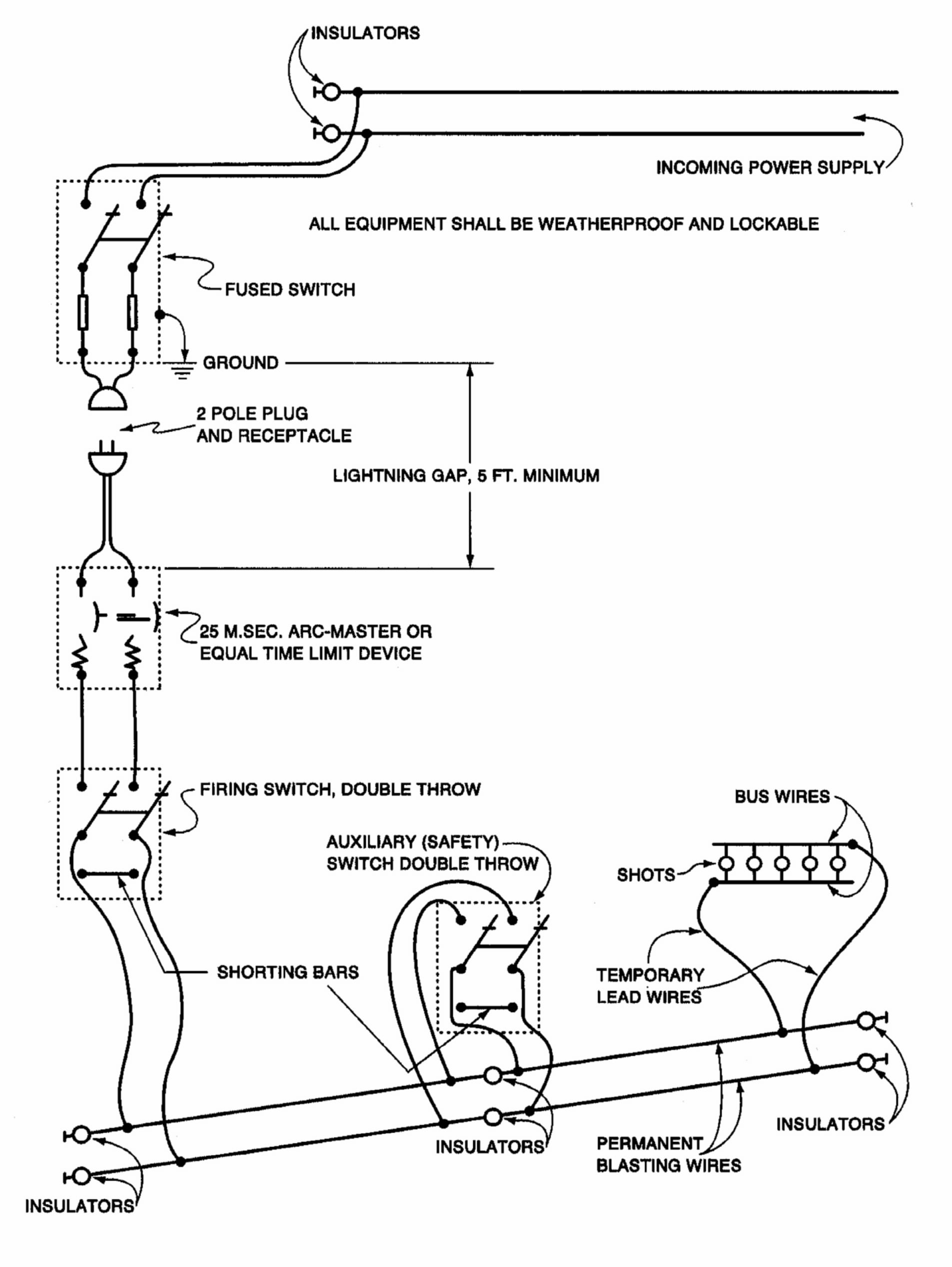 |
California Code of Regulations (Last Updated: August 6, 2014) |
 |
Title 8. Industrial Relations |
 |
Division 1. Department of Industrial Relations |
 |
Chapter 4. Division of Industrial Safety |
 |
Subchapter 7. General Industry Safety Orders |
 |
Group 18. Explosive Materials |
 |
Article 116. Handling and Use of Explosive Materials in Blasting Operations |
§ 5304. Blasting Procedure with Power and Light Circuits.
Latest version.
- (a) Before connecting the leading wires to the leg wires, the licensed blaster shall make sure that the auxiliary switch or switches are locked in the “off” position, the air gap is open, the short-circuiting device is in place, and the firing switch is locked in the “off” position.(b) If an electric circuit from a light or power source is used for firing shots, the electrical connections shall be made within an approved weatherproof enclosure.(c) Leading or connecting wires shall be tested for the presence of stray electric current before they are attached to the leg wires. The test shall be made with an instrument designed and approved for this purpose. If stray current is detected it shall be eliminated before the connection is made.(d) Before the leg wires are connected to the temporary leading wires, the blaster shall cause all persons to leave the blast area and proceed to a safe location.(e) When the blast area is clear of all persons, the person responsible for firing shall proceed to the auxiliary switch, unlock it, and move the switch handle to the “on” position.(f) After blasting, no one shall approach the blasted area until:(1) The blasting switch has been locked in the “off” or “open” position, and,(2) The blasting switch attachment plug has been disconnected from the electrical source, and,(3) The blasting wires have been shorted together.(g) In case the shot fails to fire (misfire) or the licensed blaster is not sure that the charges have fired, the licensed blaster shall lock the firing switch in the “off” position and open the air gap. The licensed blaster shall wait at least 30 minutes before proceeding to the auxiliary switch which shall be locked in the “off” position before entering the blast area.(h) Only the crew actually necessary for the loading and connecting-up operation shall be at the face during operations.(i) No unnecessary work shall be done at the face during or after loading before the shots are fired.BLASTING CIRCUIT DIAGRAMHISTORY1. Amendment of section, including transfer of Plate C-27 from section 1938, Appendix C, and new Note,filed 7-11-2003; operative 8-10-2003 (Register 2003, No. 28).2. Change without regulatory effect providing more legible diagram filed 3-2-2009 pursuant to section 100, title 1, California Code of Regulations (Register 2009, No. 10).
Note
Note: Authority cited: Section 142.3, Labor Code. Reference: Section 142.3, Labor Code.
